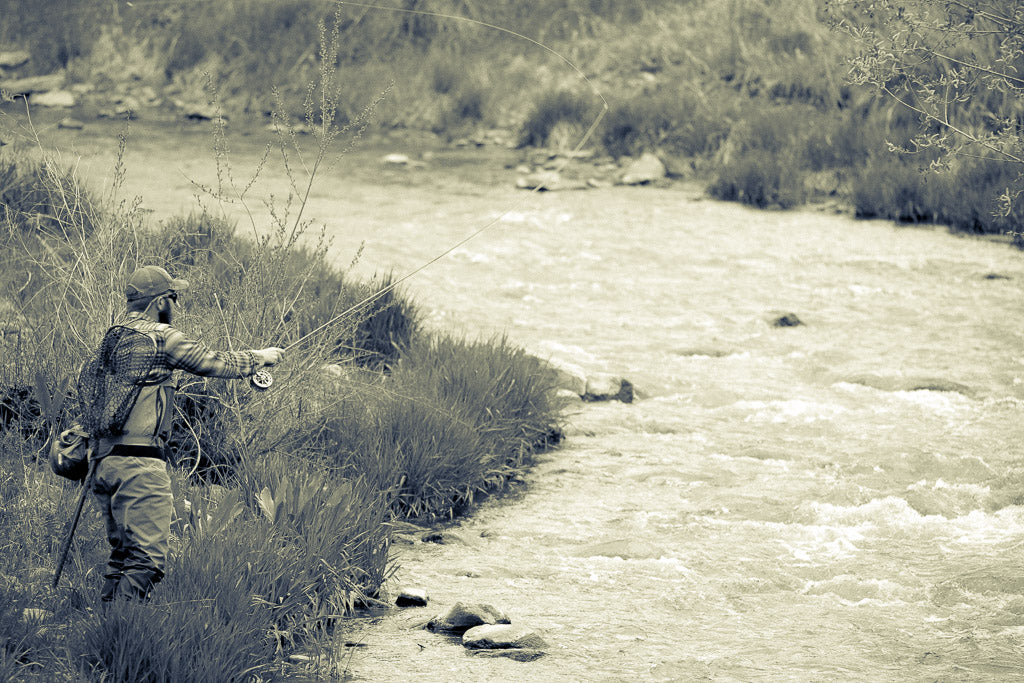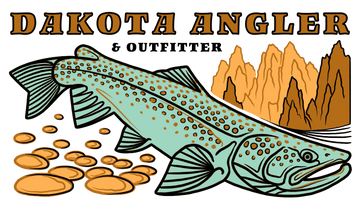How to pick a Czech Nymph Setup!

Ryan Gabert |
Czech Nymphing is quickly becoming one of our favorite ways to fish, partly because it's so effective, but mostly because it's a ton of fun! It's a foreign way of fishing to a lot of folks we run into in the shop and out on the water, and many people don't give it much of a thought. Czech nymphing in our opinion is the most effective and versatile way to nymph fish, especially in fast water. Here's a short rundown of what we think you should look for when hunting for a Czech Nymph rig!
Rods - There are a plethora of Czech Nymphing rods out on the market nowadays, and it's definitely gaining in popularity. As a rule, rods for this European style of nymphing are going to be a bit longer and on the lighter side compared to your all-around 5 weight trout stick. Generally, a 10' 3 weight is a great starting point for an all-around rod. I would classify a Czech Nymph rod as being between 10-12 feet long and in the 2-5 weight range. To most, this seems awkwardly long and light, but there's a couple reasons for the long and limber rods. First, the length allows you to reach out and fish over multiple currents and seams. You have exceptional control over your flies with the extra length, and the light weight - both in line weight and physical weight - allows you to have a super sensitive rod that you can feel even the subtlest strikes with. The softer rod allows you to cast very little fly line quite easily as well, which is an important consideration. We oftentimes get within 10-15 feet of the fish we're targeting, so you might only have five feet of line out at times! Also, average sized fish are a ton of fun to catch on a light rod. There are several companies making great rods for European Nymphing at all price points - here's a link to a collection of various Czech Nymphing Rods!
Reels - Your fly reel for a Czech Nymph setup, as with most trout-weight fly rods, isn't an especially important consideration as far as the mechanical workings of the reel. What is important however, is to have it balance the longer-than-normal fly rod out. Because the rods are a full foot or more longer than your standard fly rod, they feel a bit tip heavy with the 'appropriate' size reel hung on them. Essentially, I would recommend going a size bigger. If the rod is a 3 weight, I would get a reel that's rated for at least a 4 weight and more than likely a 5 weight. The rods feel a lot lighter in the hand, and the reels bring in more line per crank than a smaller diameter reel as well.
Fly Lines - Most fly fisherfolks today are using some type of weight forward fly line, because that's what casts the easiest and works the best on the vast majority of fly rods. Czech Nymphing relies on high-sticking and tightline methods, and you're often not very far from the fish. You're also feeling most of your strikes, so the best line for the job isn't the same type of line you would use normally. Because we're not casting long distances, we don't need a front-weighted line that's engineered to cast 50 feet. The RIO Euro Nymph fly line is our line of choice. There's very little taper to it, and it's essentially a running line with an orange tip for strike detection. Why? Since we're not casting far, the taper of the line isn't of too much concern. The thin line is easy to pick up over multiple currents, and is extremely sensitive for detecting strikes!
Czech Nymphing is an extremely effective way to fish, and it's a fun technique to learn! Look for more blog posts in the coming days about how to rig up a Czech leader and a few of our favorite flies.
Ryan
